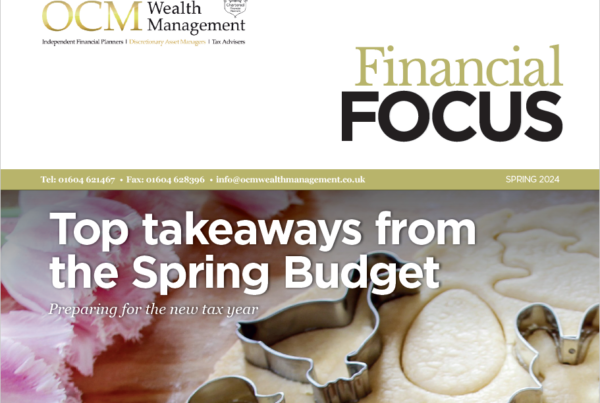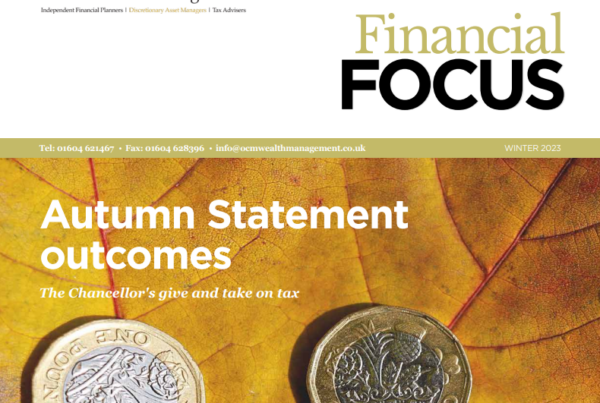Coronavirus Outbreak: What happens next?
Over the last few weeks, we have seen the fastest meltdown in global stock markets in history, and as a result we have moved defensively over the last week, with high cash positions varying from 60% – 70% while the situation plays out. At the moment, we are in a situation whereby the world is now waiting for the reaction to the virus outbreak from the rest of Europe outside of Italy, the USA and the UK. Should the virus continue to spread across the globe at its current rate, there is no doubt that the Coronavirus could bring the global economy to a standstill in the first half of the year. There have now been significant outbreaks in countries from South Korea to Italy and Iran, and the first deaths have been reported in America. The economic fallout could include recessions in the U.S., Euro-Area and Japan, the slowest growth on record in China, and a total of $2.7 trillion in lost output—equivalent to the entire GDP of the U.K. That’s the most extreme of the scenarios developed by Bloomberg Economics, drawing on the experience in China, the distribution of cases in other countries, estimates of risks to global supply chains, and a large-scale model of the global economy.
With so many unknowns surrounding the trajectory of the epidemic, and the impact of any response from governments, consumers and businesses, forecasters including ourselves cannot aspire to predict the full extent of the economic disruption ahead. Staying invested is not an option, because no one knows how bad this is or could be until we get to a point whereby we can see evidence of containment and a return to normal movement of people and corporates globally. Although we are fearful of the scenarios below in the short term, we are oddly optimistic in regard to our positioning as we move into the second half of 2020. With every risk comes an opportunity, and once the panic ceases and normal human movement and corporate activity starts to return, we will be facing a world with equities at significantly cheaper pricing than today, historically low global interest rates, an oversupply of cash, increased fiscal spending by central governments globally and hopefully still high employment and therefore a resumption in high levels of consumer spending.
To get to that point, we must see this play out, and in the short term, we are not excited, we are fearful, because of the scenarios we see as detailed below.
Scenario 1:- China shock but no large spill over to rest of the world.
When we look at the different scenarios going forward, all of them are fraught with danger, however our starting point for our analysis is what’s happening in China, where automobile sales have plunged 80%, passenger traffic is down 85% from normal levels, and business surveys are touching record lows. In other words, the economy has practically ground to a halt. Bloomberg Economics estimates that GDP growth in the first quarter of 2020 has slowed to 1.2% year on year—the weakest on record. If China doesn’t quickly get back on its feet in March / April, even that forecast could prove optimistic. For the rest of the world, China acts as a source of demand and supply. If China can quickly get the outbreak under control, and the world’s factory rumbles back to life in the second quarter, then the impact on the rest of the global economy could be contained.
That’s a real possibility. A survey by Made-in-China.com (which is one of the main platforms connecting Chinese suppliers and global buyers) found that by late February, 80% of manufacturing firms had resumed operations. According to the data, by late April, production capacity should be back to normal. If that happens, a severe shock in the first half would be followed by recovery in the second half of the year. For the world as a whole, and major economies like the U.S., the impact would then be hard to see in the full-year GDP data. Still, a lighting company based in China’s Zhejiang province illustrates how the problem is changing shape. The firm has overcome the domestic shock: All workers are now back at the factory. But now they’re preparing to face a different problem, which is that they have no orders.
Scenario 2 – Contagion is not contained, and rest of world starts to have high levels of infection
There is an argument that we have already moved from Scenario 1 into Scenario 2 because South Korea, Italy, Japan, France and Germany, (the major economies other than China that have seen the most virus cases) are now taking a hit and economic conditions are deteriorating. In Bloomberg’s calculations, this scenario takes global growth for 2020 down to 2.3%, some way below the pre-virus consensus forecast of 3.1%. In this scenario, China does not have a V shaped recovery because factories do not have enough demand as the rest of the world is starting to shut down as it did, coupled with low inventory and supply chain obstacles capping productivity.
Scenario 3 – Widespread Contagion and more regional quarantining. (we are entering this phase!!!)
In scenario three, Bloomberg layer on a more severe shock to South Korea, Italy, Japan, France and Germany, and smaller shocks to all the countries that had reported any cases as of the start of March. That includes the U.S., India, the U.K., Canada and Brazil, meaning that all of the world’s 10 biggest economies suffer a slowdown as they fight to contain the domestic spread of the virus. Italy has now gone into lockdown, while the UK chief medical officer expects the UK to move to stage 2 which is from “containment” to “delay” within the next 10 – 14 days. Delay means closing schools, postponing or cancelling large scale gatherings and encouraging people to work from home which is when the severe localized economic implications start to unravel. This approach is being repeated in different countries with some also conducting mass testing to find those infected before quarantining them as they did in Korea. In this scenario, global growth for 2020 slides to 1.2%, again as a reminder from a pre-virus consensus forecast of 3.1% In this scenario, the Euro-area and Japan go into recession, and U.S. growth drops to 0.5%, enough to see election year unemployment moving higher.
Scenario 4 – Widespread Contagion and Global Pandemic
To capture the economic impact of a global pandemic, we assume that all countries in the model face a severe shock, equivalent to the drop in growth China is suffering in the first quarter. If that happens, global growth for the year goes to zero. The U.S. joins the euro-area and Japan in contraction, potentially changing the dynamic of the presidential election. China’s economy expands just 3.5%, the slowest in records back to 1980, when Deng Xiaoping’s reforms were just getting underway. Worldwide, lost output hits $2.7 trillion.
So far
The OECD recently cut its expectation for global growth to 2.4% from 2.9% on coronavirus fears and warned that growth could fall as low as 1.5%. Goldman Sachs’ top US strategist wrote earlier today that the bull market will soon meet its demise, with equities seeing a further 15% in losses beyond what they’ve already suffered. Recent forecasts for first-quarter GDP growth in China range from 5.8% all the way down to -0.5%, underscoring the high degree of uncertainty. Policy research predating the coronavirus outbreak suggests that there’s a downside risk to even the most optimistic of these forecasts. A 2006 paper by the World Bank put the potential cost of a severe flu pandemic at 4.8% of global GDP—a tailspin that would rival that seen in 2009 after the financial crisis.
Summary
A summary from the detail above and the excellent work by Bloomberg is that we are already in Scenario 2 and moving towards Scenario 3, which means that global GDP will fall by somewhere between one and two thirds of where it was only two weeks ago. There is no room therefore to be gambling by staying invested and carrying equity risk into that scenario when we are moving at such pace. There is no doubt that policy action by central banks and central governments to ease the pain of falling incomes due to self-isolation as well as keeping cash flows open for corporates is of the greatest importance, but none of this will stop the decline in global GDP. This is because stimulus does not resolve the problem which is reduced spending from consumers and corporates and supply side issues due to low inventory. Policy action will obviously cause short term optimism, but with US equities still valued at 17 – 18 times earnings with no visibility of future earnings, there are risks that are impossible to quantify at this juncture. There is no ability to see anything but an escalation in the contagion and reaction globally to move further into the drop in GDP mapped out in scenario 3.
As a result, we sit in cash and analyze the developments all day every day. When we see some sight of a market bottom, coupled with containment, decreasing contagion and free movement of people goods and services globally, we will start to invest normally again. We expect this to occur anywhere between 4 weeks and 12 weeks from now based on how long it took China to take control of the contagion.
Important Note on Cash
As it stands, we are currently holding significant cash levels, which is not positive if we saw a scenario like we saw in 2008 as regards to banks collapsing. Since 2008, all banks now undergo significant stress testing and we are not therefore expecting any banks to default. We continue to monitor this risk on a daily basis and if we see the risks increase and potentially a move to Scenario 4, we will look to buy short dated UK government debt as a secure hold to protect capital. As this is not a real risk based on our outlook today, we are not concerned, but it is on our watchlist. The key is to stay nimble and be able to invest at a moment notice in such a changing market.
Key Events We Are Watching This Week:
- Friday: US consumer sentiment for March
- Monday: China retail sales for Jan-Feb
For anyone who wants further data to substantiate the position please review the attached Global Economic Update document and the Economic Dataset attached.
Model Portfolios & Indices
Global stock markets experienced a sharp sell-off over the week due to fears over the COVID-19 outbreak in key economies around the world. Due to portfolio diversification, we have not moved anywhere near as negatively as the indices, however the portfolios declined over the week, with higher risk portfolios being more exposed to equity market movements. After an increase in cases around the world and new lock down measures in an attempt to contain the virus, we now see further risks ahead and expect to see a further decline from here in the near term as consumer spending and demand continues to be effected. The recent drop in portfolios and indices is hugely disappointing, however we are now defensively positioned amid rising downside risks, and remain optimistic about a growth pickup in the second half of the year, allowing us to regain lost ground.
Please note that the YTD data in the table below reflects performance from the start of the new year.
Important Information
The data above will not directly correlate to the indices as there is always a delay in pricing because the US markets close significantly later than the European markets and the Asian markets. The data set above reflects the last close and much of the day’s movements will not yet be reflected in the portfolios due to pricing delays. You cannot therefore directly correlate indices to the portfolios. The value of investments may fluctuate in price or value and you may get back less than the amount originally invested.
Past performance is not a guarantee of future performance. Performance figures quoted include the fund manager charges but exclude other fees such as adviser, custodian, switch and/or discretionary investment management fees. Unless otherwise instructed and accrued, income is reinvested into the portfolio.
This Day in History
On this day in 2018, China’s National People’s Congress approved the removal of term limits for a leader, allowing Xi Jinping to remain President for life. This represented a return to the Mao era of one-man rule in China.
Have a great week,
Jason & Gina



